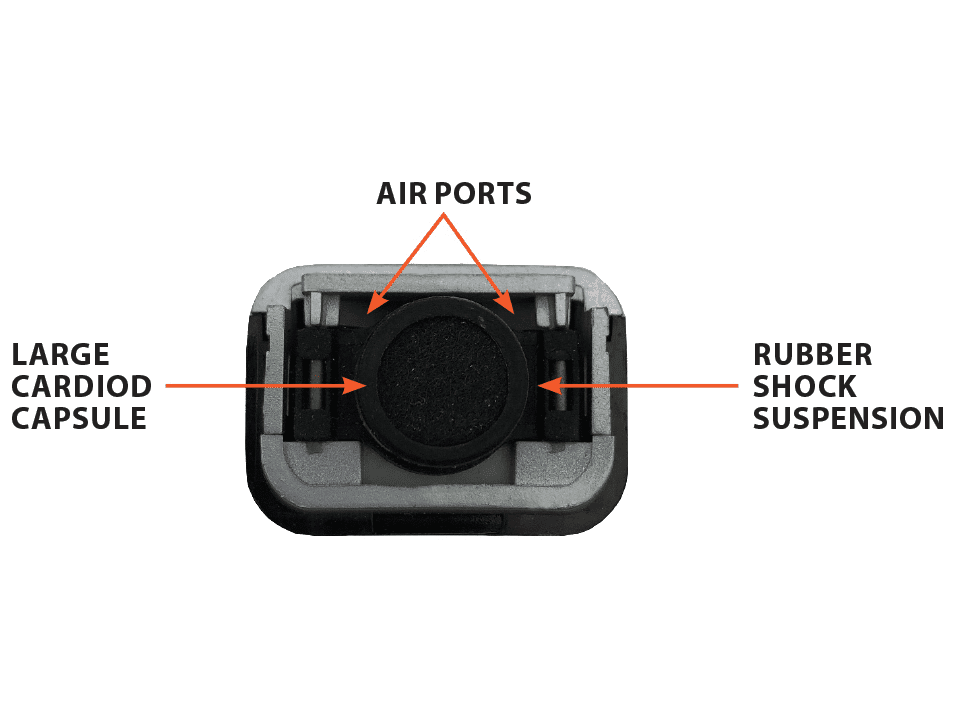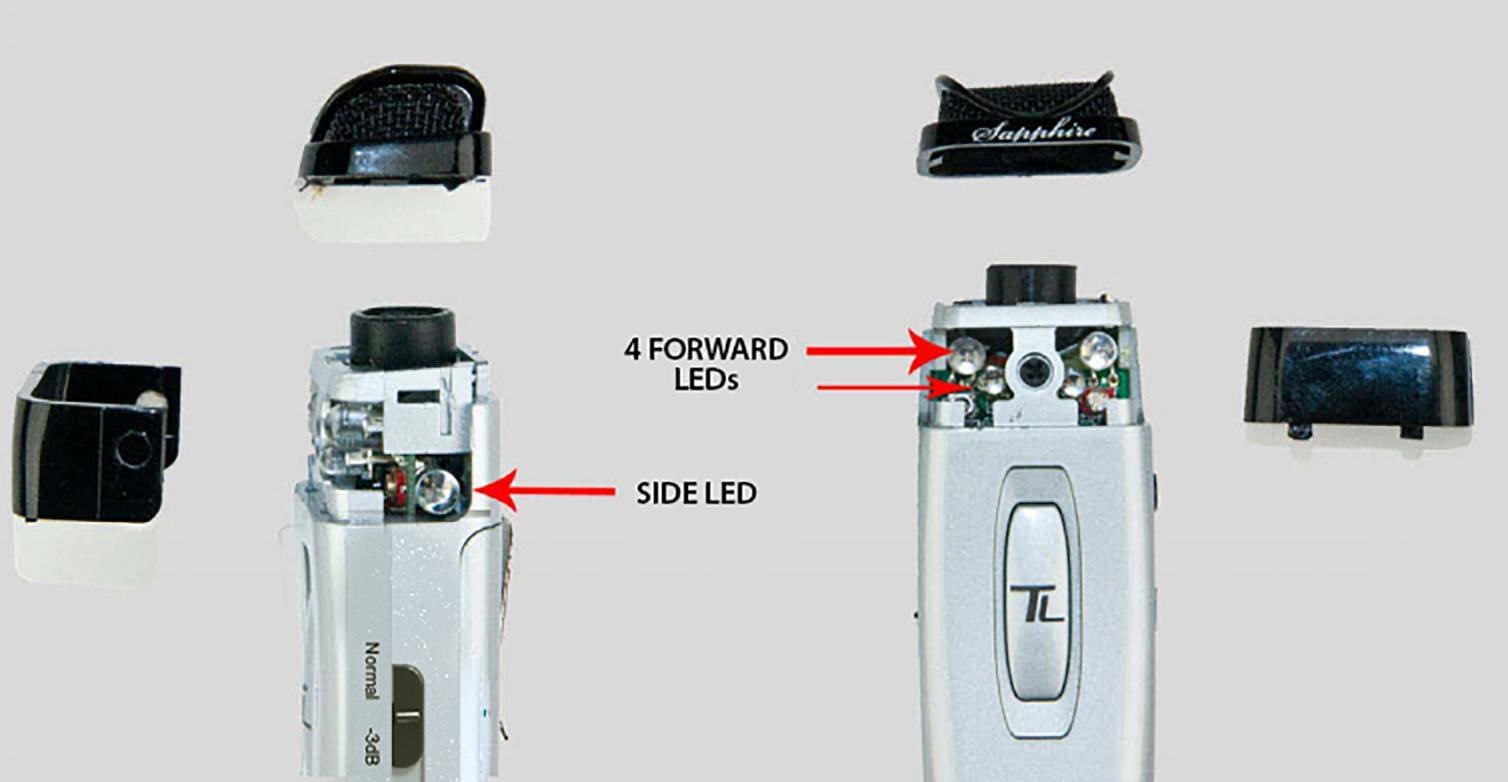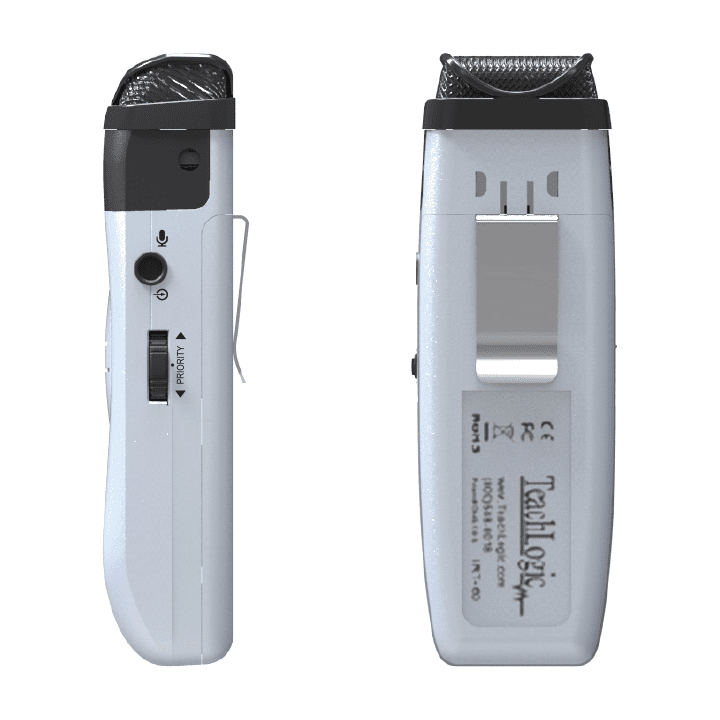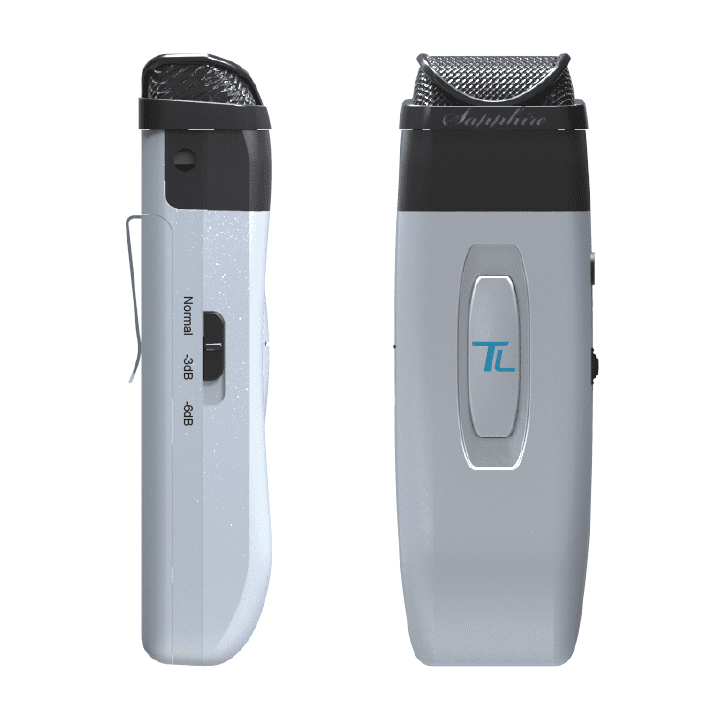Tech Talk
While certain audio products have often been sold on an emotional basis to the education market, the laws of physics and science still dictate our performance boundaries.
We are trying to come as close as possible to perfection working while within those rules
How does the Sapphire™ get so much gain before feedback?
The team at TeachLogic® has accumulated decades of experience working with lavalier, lapel and podium microphones in the most demanding live sound situations. We have learned that pattern control and frequency response are equally important in getting maximum gain before feedback. Pattern control is mostly a function of physical construction, and is not something that is easily changed by “complex signal processing”. A true cardioid (unidirectional) pattern is most desirable since the classroom environment usually consists of ceilings in the 10 ft range. With this short distance from ceiling to floor, the reflections off the floor create a large feedback potential. With a well designed cardioid capsule, These floor reflections (and also side wall reflections) are minimized, so the mic capsule concentrates on picking the educator’s voice. This rejection capability results in much more gain before feedback.


How does the Sapphire™ transmitter avoid “line of sight” connection problems?

Early infrared transmission devices (similar to your home TV tuner) only used one or two emitting diodes that were very directional in their output. In the last few years, emitter diodes have become much more powerful in their infrared output. The Sapphire uses 6 of these high output light emitting diodes to “spray” infrared over a 270-degree pattern. In the exploded view below, you can see the side LEDs that send the infrared signal to the sides of the room which will then be reflected up to our ceiling dome sensor. The side LEDs are extremely critical in maintaining wireless connection no matter where the teacher moves around the classroom.

The Sapphire microphone system is the highest performing product of its type in the entire Sound Field industry. And it only weighs 1.4 ounces. The lithium-ion battery pack is rechargeable through its bottom mounted micro USB connector.
Why does the Sapphire sound so “natural”?

To start, we borrowed a concept from the world of studio recording. Similar to the “rubber band” suspensions used to isolate noise from the studio microphone, our large rubber shock suspension “floats” the capsule and isolates it from much of the clothing and body rustle often associated with pendant or lapel microphones.
No Audio Dropout Guarantee
When a Sapphire microphone is used with an ICS-55 ceiling sensor, if audio dropout occurs in a standard classroom (enclosed classroom up to 1600 square feet with ceiling heights of 12 feet or less), TeachLogic will provide additional sensors at no charge.
Know a teacher that needs a microphone in his/her classroom?
Inquire about our grant program
